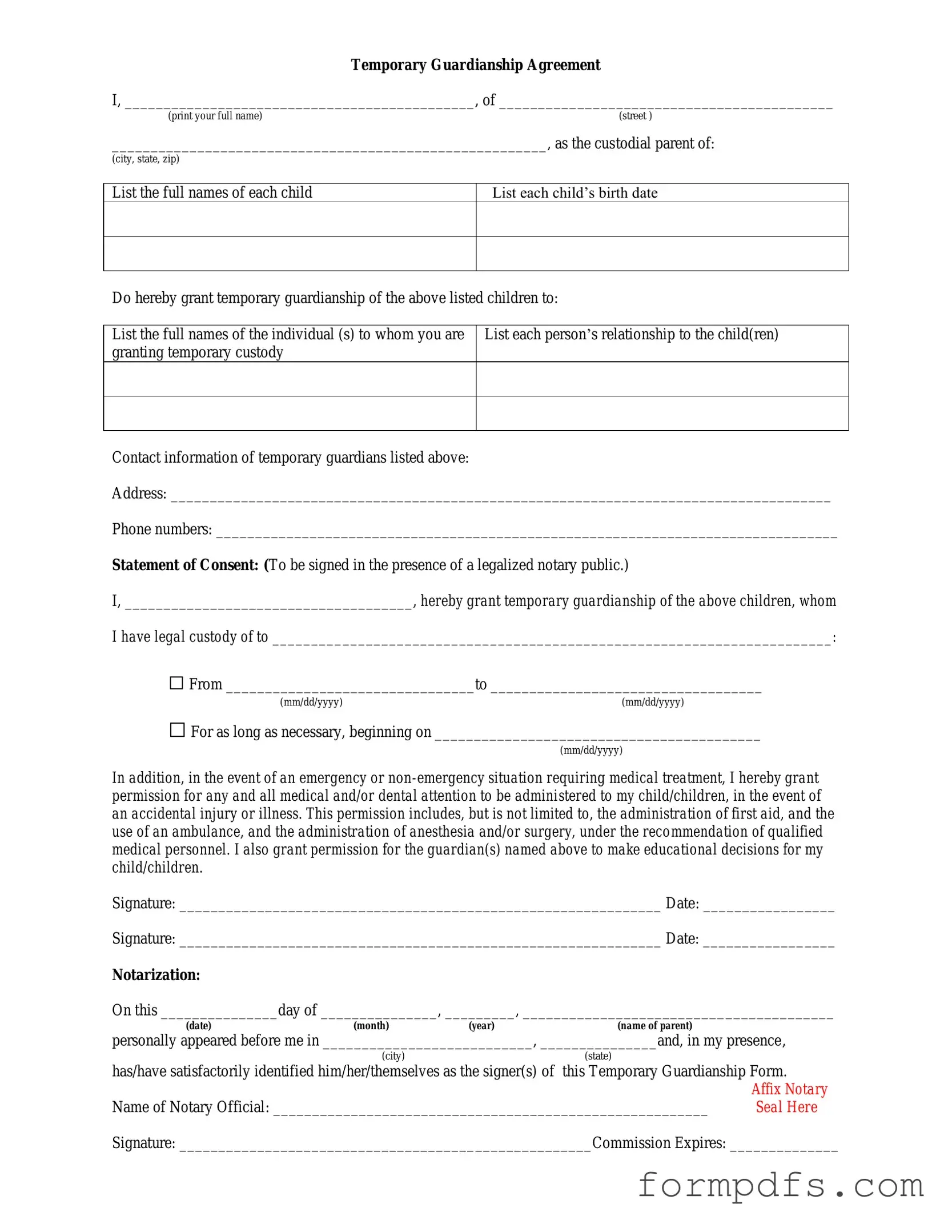What is a Temporary Custody form?
A Temporary Custody form is a legal document used to request temporary custody of a child. This form is often filed in situations where a parent or guardian is unable to care for the child, and another individual seeks to provide a stable environment for the child’s well-being. It is essential for ensuring that the child's needs are met during a transitional period.
Who can file a Temporary Custody form?
Typically, a Temporary Custody form can be filed by a parent, grandparent, or another relative who has a close relationship with the child. In some cases, a family friend or a foster parent may also be eligible to file for temporary custody, provided they can demonstrate a significant connection to the child and a commitment to their welfare.
What information is required on the Temporary Custody form?
The form generally requires details about the child, including their name, age, and current living situation. It also asks for information about the person seeking custody, such as their relationship to the child and their reasons for requesting temporary custody. Additionally, any relevant background information regarding the child's parents or guardians may be necessary to provide context for the request.
How long does temporary custody last?
Temporary custody is not permanent; it is intended to provide a safe environment for the child during a specific period. The duration can vary based on the circumstances and the court's decision. Typically, temporary custody lasts until a court hearing can be scheduled, at which point a more permanent arrangement may be established.
What factors does the court consider when granting temporary custody?
The court will evaluate several factors to determine whether to grant temporary custody. These factors include the child's best interests, the stability of the proposed living situation, the relationship between the child and the person seeking custody, and any evidence of neglect or abuse in the current living environment. The court aims to ensure that the child's needs are prioritized in every decision.
Can the Temporary Custody form be contested?
Yes, the Temporary Custody form can be contested. If a parent or guardian disagrees with the request for temporary custody, they have the right to challenge it in court. They may present evidence or arguments to support their position. The court will then consider both sides before making a decision that serves the child's best interests.
Is legal representation necessary when filing a Temporary Custody form?
While it is not mandatory to have legal representation when filing a Temporary Custody form, it is highly recommended. Navigating the legal system can be complex, and having an attorney can help ensure that all necessary information is included and that the process runs smoothly. Legal counsel can also provide guidance on how to best present the case in court.
What should I do after filing the Temporary Custody form?
After filing the Temporary Custody form, it is crucial to prepare for any upcoming court hearings. This may involve gathering supporting documents, such as witness statements or evidence of the child’s needs. Staying in communication with the court and any involved parties is also important to ensure that all requirements are met in a timely manner.
Can the Temporary Custody arrangement be modified?
Yes, a Temporary Custody arrangement can be modified if circumstances change. If the current situation no longer serves the child's best interests, either party can request a modification through the court. This may involve presenting new evidence or demonstrating a change in circumstances that warrants a reassessment of the custody arrangement.
